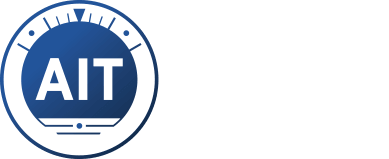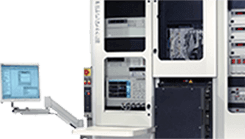EC Batteries Directive
The European Parliament and the Council adopted Directive 2006/66/EC on batteries with the intent of reducing the impact on the environment and increasing recycling.
Member states were required to adopt national legislation by September 26, 2008. AIT is actively working with its Distributors in Europe to fully comply with these regulations as local legislation passes. The directive entails obligations such as labeling, registration, recycling, and restriction of batteries containing cadmium, lead, and mercury.
The labeling of batteries consists of the following symbol, including the battery capacity, and the chemical symbol for cadmium, mercury, or lead if contained above the legal threshold limits.
 This symbol indicates that the batteries used in the product should be disposed of separately from municipal waste. For AIT products, only the independent USB Chassis products include a lithium battery. These batteries are embedded into our USB Chassis products, are intended to last for the life of the product, and can be separated from the appliance upon return to AIT before disposal for separate handling during the recycling phase of the appliance as required under the WEEE directive. No other AIT products include any type of battery.
This symbol indicates that the batteries used in the product should be disposed of separately from municipal waste. For AIT products, only the independent USB Chassis products include a lithium battery. These batteries are embedded into our USB Chassis products, are intended to last for the life of the product, and can be separated from the appliance upon return to AIT before disposal for separate handling during the recycling phase of the appliance as required under the WEEE directive. No other AIT products include any type of battery.
AIT offers proper collection and recycling by providing a return policy to all customers end the end of life use. AIT expects customers in the European Union to either return the product to AIT or use the local collection and recycling systems in place to properly dispose of all batteries and electronic products.
Proper disposal of batteries reduces the environmental impact and risk to human health. For additional information about the potentially harmful effects of substances used in batteries on human health and the environment, visit the US Environmental Protection Agency or the National Institute for Occupational Safety and Health.








